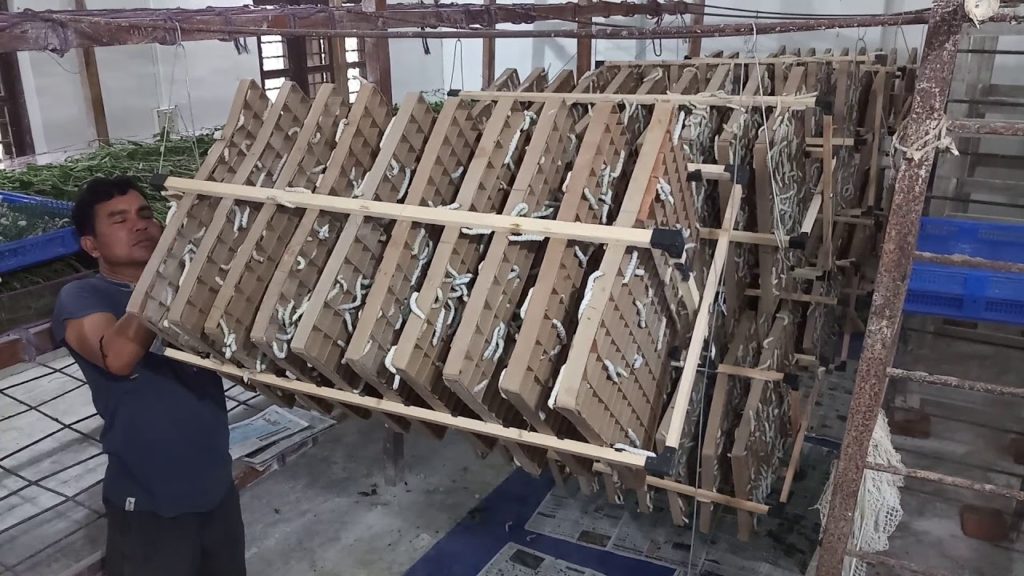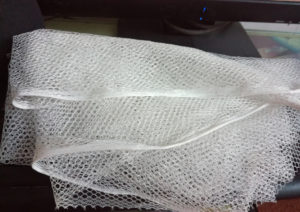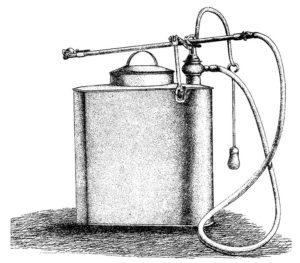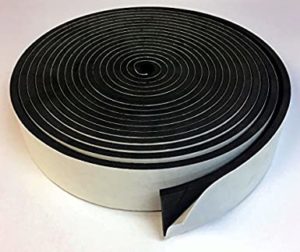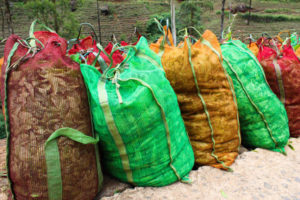Rearing Methods
- Tray rearing,
- Shelf or Rack rearing,
- Floor rearing.
1. Tray rearing
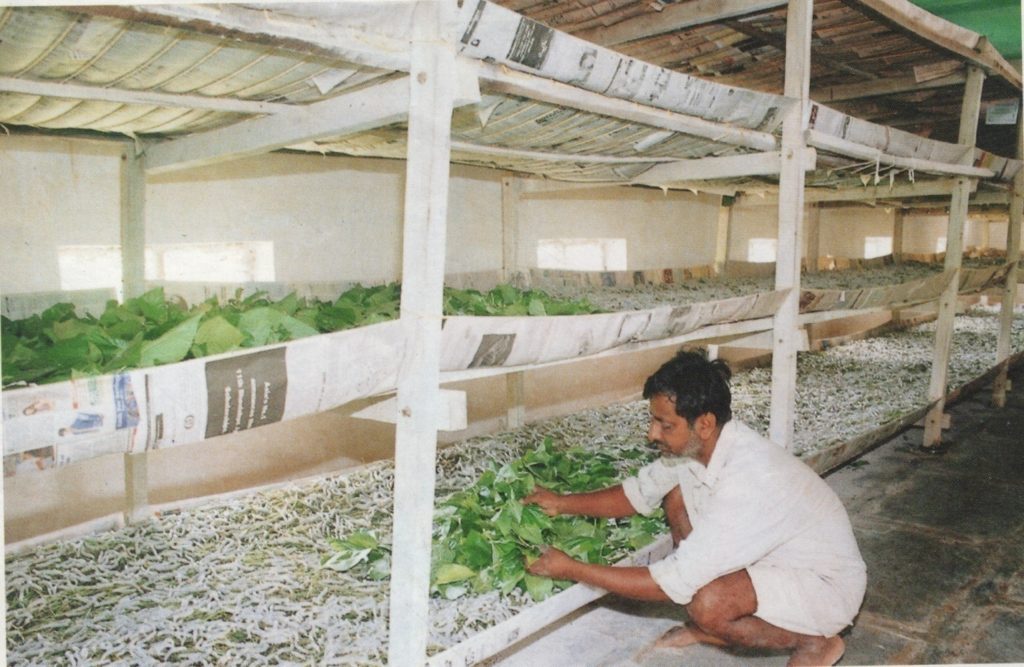
In India and China, rearing is done traditionally in bamboo and wooden trays in the size of 3 to 4 diameter, these trays are arranged in wooden or iron or bamboo stands. Tray rearing is easy and low of cost for marginal and small scale farmers, this type is rearing cum dwelling houses. In this method, feeding is done three times a day, and they’re also some heavy work to be done in this method like cleaning the tray, bed, and litter.
2. Shelf or rack rearing

This is a normal method which is used with shelf or rack to rearing, here whole shoot or mulberry branch are used to feed the worms. The height of the rack should be in 6-7 ft. and 1 ft. of the bottom tier above the ground, if we keep more than three tires,we will face difficulties to monitor the worms although we can rear more silkworms.
3. Floor rearing
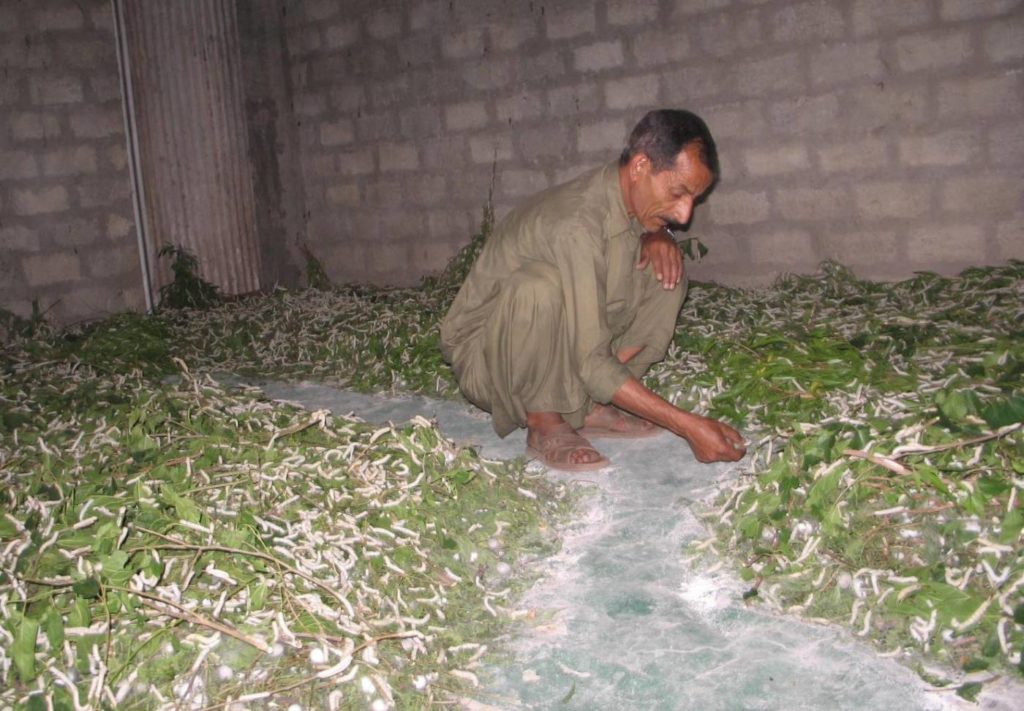
This method is followed very rarely, we can see these methods were followed by someplace in China and Kashmir in India. Here the rearing is done on the floor using mulberry leaves. We can make the rearing bed as long as the room we build. We can also make it effective, it is highly economical and hygienic. We can spread a newspaper or sheets on the floor to create a bed. Before spreading the newspaper or sheets we must dust lime to act as a disinfect.
Rearing House

Rearing house is a part of Sericulture, where silkworms are raised. An individual house is a great idea for rearing silkworm, the silkworms don’t tolerate high temperatures, high humidity, and bad ventilation, the rearing house should have cross ventilation facilities to bring down the room temperature and for removal of vapor and dangerous gases created from high volumes of waste matter discharged by the silkworms, the houses must have a sufficient number of shutters to allow good ventilation. Preparation should be made to make the house as an airtight to prevent worms from infection. Rearing house has to be built in a way to give the best temperature of 28º c and RH of 60% for the growth of silkworm.
Silkworm Rearing House and Equipment’s
Rearing house
- The wall height of the rearing house should be minimum 10` on the sides and 14`at the centre.
- The room should be provided for sterilizing us, we should wash our hands and legs before entering the house.
- To protect the walls and roof from direct sunlight we can plants and trees around the rearing house.
- To evacuate extra humidity during rainy days, we can place exhaust fans
- We should fix nets on doors and windows to avoid entry of flies and insects.
- We can provide electrical points in the house for using heaters, humidifiers, and coolers
- House should contain fluent water faculty.
- We should prevent the entry of lizards and rats.
Silkworm Rearing House Environmental Conditions

Temperature, humidity, air current, and light are the game-changers.
Temperature – On the temperature range of 20-28°C silkworm rearing will be successful. If the temperature goes below 23°C, the larva’s duration will extend to one day and when the temperature goes above 36°C, it affects larva.
Humidity-In the range of 65-70 % of humidity, we can assure the best quality of cocoon.Humidity indirectly dry leaves in the rearing bed. At feeding, high humidity should be maintained and it should be reduced during moult.
Air Current – At late age rearing air current should be in 1.0 m/s for 30 min before feeding. There must be good ventilation, which helps in regulating temperature and humidity.
Light – Silkworm prefers dim light, although they can’t live in darkness avoid strong light and it’s highly recommended to avoid direct sunlight and strong light. Late age of silkworms wants 16 hrs of light and 8 hrs of darkness to get a good uniform growth.
1. Young Age Silkworm Rearing House
- This house is also called as Chawki rearing center, For good health and growth of young age silkworms temperature, humidity and hygienic condition must be provided
- For bushing 5000-600 DFLs (Disease Free Laying, i.e. eggs) a rearing hall should be in the measurement of 30`x 30`, leaf storage room should be in 10`x 20` and ante-room in 10` x 10` size.
- Sufficient ventilation in the rearing hall is recommended.
- The water channel inside the rearing hall helps to maintain humidity and helps us to keep away the ants.
- The ceiling should be at 9`-10` from floor
2. Late Age Silkworm Rearing House
- The silkworm rearing house should be built by north facing to avoid direct sunlight entering into the rearing house.
- Ventilators must be placed both above and below the windows for air circulations
- House should be located on an elevated place to avoid moisture migration from floor to rearing house
- The rearing house should have good cross-ventilation, facilitate drainage.
- It should have a cement flooring
- Provide a 10-15cm deep channel inside the rearing hall, this helps to drain out water at the time of cleaning the house. In the time of summer water contained in channel helps to increase humidity
- The roof can be built by asbestos or RCC sheets to avoid the entry of flies.
- In high-temperature regions, we can avoid the heat by using coconut fronds and we can also use false ceiling of plywood or thermocol sheets.
- The minimum width should be 5.5m (18’).
Silkworm Rearing Equipment
- Mountages for spinning,
- Rearing beds,
- Old newspapers or brown paper,
- Bed cleaning nets,
- Leaf picking bags,
- Chopping knives, boards, table
- Feathers,
- Foam rubber strips,
- Ant wells,
- Knapsack sprayer.
Young Age Silkworm Rearing

Young age silkworm rearing is also called as a Chawki rearing, here in a tray of 120 x 90 cm size, 20 dfls are brushed and reared up to the second stage.
Leaves – It was selected and feed on the 3rd or 4th from the top leaves, next 6th to 7th leaves are used to rear the young age worms, size of leaves must be chopped to 0.5 sq.cm to 1 sq.cm. If the leaves were not preserved properly, it will dry and unsuitable for feeding, we can preserve it by wet gunny bag on the leaves. Most importantly we should know that silkworms are grown based on feeding leaves, so we should feed them with succulent leaves that have rich nutrients and moisture.
Cleaning – was the process of removing the silkworms waste and leftover leaves on the bed, a net with mesh sized 0.5 cm x 0.5 cm is spread over the bed and feed is given, worms climb through the net and reach the fresh leaves, net with Worms and leaves are transferred to another tray.
Moulting – while we perform the moulting, we must be careful in not to disturb the silkworms, we can use lime at 30-50 g/m2 to the rearing bed will help to keep dry, we should detect when to stop or resume the feeds to get the uniform growth of the worms.
Late Age Silkworm Rearing
Late age worms are third, fourth, and fifth instar larvae, they reared in bamboo trays. Newspaper can be spread over the trays to take moisture in the leaves, we should not feed the over matures leaves and yellow leaves, they may contain the disease. Over matured leaves can be fed to the third and fourth stage larvae and we can feed, hard leaves are fed in the fifth stage.
Moulting – Removing paraffin papers should be done. Before setting for moult, spread larvae in rearing bed for 8hours.To reduce wet containing in bamboo trays, apply lime powder.
Mounting – Mounting must be done in a ventilated place. In the final instar, worms stop to feed and ready to spin, Mounting should not be delayed or they will waste silk. About 800-900 worms meter squire are kept on a mounting.
During spinning– Silk quality depends on the care taken in the spinning, in spinning we should maintain temperature and humidity. To avoid wastage of silk for forming web and double cocoons, we also must ensure proper spacing.
Harvesting – In two to three days silkworms complete spinning, but harvesting should not be done at the same time because worms are still in the pre-pupal stage. On the fifth day, we can do the harvesting, in that stage pupae are fully developed, but we should not harvest when pupa is in honey-like color. Dead and diseased worms should be removed before harvest. If you decided to market cocoon it must be done on the sixth day.
Shoot Rearing

Shoot rearing house – It’s highly recommended to build the separate house for shoot rearing and it wants to be near a shaded area
Shoot rearing rack – It should be in 1.2m x 11m for rear 50 dfls,15 cm border can be provided to prevent the migration of the larva, the shelf must be in 3 tier system with space of 50 cm between tires.
Shoot Harvesting – We can harvest the shoot at 60-70 days after pruning, it must be stored in a dark cooler room from the upwards. We want to provide a water bed in a thin layer of 3 cm and place the shoots in the water.
Feeding – We must ensure that shoots are equally mixed of different qualities of leaves, the third instar larva should be transferred after molting.We must provide extra feedings if ninety percent of the larva is not settled for molting, 3 feedings in winter or rainy, and 4 feedings during summer.
Bed cleaning – It should be done one time on the second day of the fifth instar by the net method.



